 Fall decorating means pumpkins, especially for outdoor decorating. Whole or carved into jack-o-lanterns, pumpkins are frequently placed on porches, steps, and walkways to provide a festive seasonal touch. [Read more…]
Fall decorating means pumpkins, especially for outdoor decorating. Whole or carved into jack-o-lanterns, pumpkins are frequently placed on porches, steps, and walkways to provide a festive seasonal touch. [Read more…]
Rodent Awareness Week – Hidden Health Dangers of Rodents
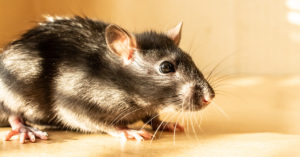 Whether scampering across your kitchen floor or scrabbling in your walls or attic, rodents are unwelcome visitors to your home. Fall is prime time for invading rats, mice, squirrels, and other small rodents. As temperatures drop, they seek warmth, food, and shelter indoors. Unfortunately, their desire for comfort is not compatible with your need for safety.
Whether scampering across your kitchen floor or scrabbling in your walls or attic, rodents are unwelcome visitors to your home. Fall is prime time for invading rats, mice, squirrels, and other small rodents. As temperatures drop, they seek warmth, food, and shelter indoors. Unfortunately, their desire for comfort is not compatible with your need for safety.
In observance of Rodent Awareness Week from October 16-22, let’s explore some of the hidden dangers of exposure to these common autumn pests.
What Problems Do Rodents Cause?
Rats, mice, and other rodents can cause issues with your home, health, and peace of mind. Are rodents a health hazard? Yes. Can they damage your home? Absolutely.
So, how are rodents harmful to humans? Rats, mice, and squirrels can cause a wide variety of health issues, and they are also a source of property damage when they chew through your walls, pipes, and wires. Rodents are blamed for 30,000 structure fires yearly due to gnawing on electrical wires.
Can You Get Sick from Rats in Your Walls?
What happens in your walls doesn’t always stay in your walls. Rodents leave their nests within a wall to seek food, exposing you, your family, and your pets to the many illnesses they can carry. Rodent-borne diseases are spread through bites and contact with feces, urine, saliva, and tracks.
Rodents don’t even need to leave the wall to spread viruses that can be transmitted through airborne dust. Diseases may also be transmitted through the parasites they carry. For example, fleas, mites, or ticks that feed on rodents can quickly leave the wall and bite you or your pets.
What Diseases Spread from Rodents to Humans?
Throughout history, exposure to rodent-borne diseases has caused civilization-ravaging pandemics. Medical science has evolved to the point where these diseases are rarely fatal [when treated] in developed countries, but they still can be severe and have lasting effects on your health.
Some of the diseases spread by rodents in the U.S. include
- Rat-Bite Fever (RBF),
- Hantavirus,
- Bubonic Plague,
- Leptospirosis,
- Salmonellosis,
- Tularemia, and
- Lymphocytic Choriomeningitis (LCM).
Rodents are a vector for monkeypox, although transmission is highly unlikely unless you have direct contact with a rodent’s blood or bodily fluids. Until more data is available about the current monkeypox outbreak, handle rodents and rodent carcasses with care, and ensure that your pets do not encounter them.
If you hear scratching in your walls, take action as soon as possible to remove the source of the problem before it becomes a health hazard. The quickest way to address the situation is to hire a pest control professional to locate and identify the pests in your walls. Trained experts can eradicate the problems and ensure they do not return.
Twin Forks Pest Control® is Your Rodent Elimination Expert
Twin Forks Pest Control® has been eliminating rodents, including those that find their way into your walls, for more than 20 years. Our trained experts will rid your property of unwanted pests, and we offer year-round protection plans so that your home stays pest-free. At the first sign of problems, call us for a free estimate.
When to Call Wildlife Control Services
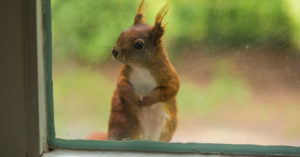 Small furry animals like squirrels, raccoons, and chipmunks are cute in cartoons and zoos, but they can pose severe hazards to homes and homeowners. Long Island residents are accustomed to living harmoniously with these critters, but sometimes they get too close for safety. When wildlife destroys your yard or invades your home, it’s time to talk to a wildlife removal expert who can humanely trap and remove them. [Read more…]
Small furry animals like squirrels, raccoons, and chipmunks are cute in cartoons and zoos, but they can pose severe hazards to homes and homeowners. Long Island residents are accustomed to living harmoniously with these critters, but sometimes they get too close for safety. When wildlife destroys your yard or invades your home, it’s time to talk to a wildlife removal expert who can humanely trap and remove them. [Read more…]
Why Are Yellow Jackets Aggressive at the End of Summer?
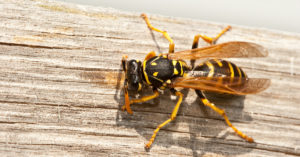 Of the various types of wasps, yellow jackets have one of the fiercest reputations. Thoughts of them usually conjure mental images of airborne hostility and repeated painful stings. [Read more…]
Of the various types of wasps, yellow jackets have one of the fiercest reputations. Thoughts of them usually conjure mental images of airborne hostility and repeated painful stings. [Read more…]
Great Black Wasps on Long Island
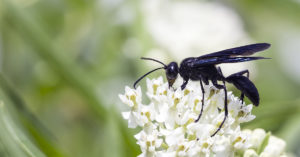 It’s like something from a horror movie, but you can’t look away. A giant black insect flies through the air with a paralyzed cicada in its jaws. It lands in the dirt and begins to stuff the creature into a hole in the ground, where hungry larvae will consume it while it’s still alive. No, you didn’t walk onto a creepy kaiju movie set. It’s just a great black wasp, going about its daily business.
It’s like something from a horror movie, but you can’t look away. A giant black insect flies through the air with a paralyzed cicada in its jaws. It lands in the dirt and begins to stuff the creature into a hole in the ground, where hungry larvae will consume it while it’s still alive. No, you didn’t walk onto a creepy kaiju movie set. It’s just a great black wasp, going about its daily business.
Are Great Black Wasps Dangerous?
Great black wasps may be fearsome looking, but they typically aren’t aggressive toward humans. Unlike yellow jackets and other social wasps, great black wasps are solitary and don’t have a large colony to defend – or join them in an attack. A female great black wasp can sting, but she will only do so if provoked or her nest is threatened.
Great black wasp stings do happen, but they rarely cause more than moderate pain at the site of the sting. As with other insect stings, some individuals may have an allergic reaction, ranging from redness and swelling around the sting to anaphylaxis, which constitutes a medical emergency. If you are stung by a wasp and experience severe swelling of the face, lips, or throat, hives, dizziness, breathing problems, or a weak pulse, administer an EpiPen, and call 911 immediately.
What Is The Difference Between A Mud Dauber And A Wasp?
With so many species of wasps calling Long Island home, it’s easy to confuse great black wasps with mud daubers. They’re both solitary wasps that only sting when provoked, but they are pretty different in where they nest and what they eat.
Mud daubers get their name, as you might expect because they use mud to build their nests. Long Island hosts three species of mud dauber wasps – the organ-pipe mud dauber, the black and yellow mud dauber, and the metallic blue mud dauber.
Like the great black wasp, mud daubers are large, with the females averaging between 1.5-2 inches long. Unlike the great black wasp, which is monochromatic, dauber species vary in color.
Mud daubers build their nests above ground, under eaves, on walls, or other flat surfaces. Female daubers collect mud and form it into either a group of cylindrical shapes (organ-pipe daubers) or a smooth, fist-sized nest (black and yellow daubers). Blue daubers don’t build their nests; they take over abandoned nests formerly used by their black and yellow cousins.
Great black wasp females build their nests underground. They use their mouth and legs to dig a tunnel about a foot below ground where they will nest, lay their eggs, and feed their larvae.
Mud daubers and great black wasps consume insects but choose very different prey. Mud daubers are spider hunters, whereas great black wasps eat crickets, katydids, and grasshoppers. Like most wasps, both paralyze their prey with venom, preserving it for up to a week so it can be eaten slowly while still alive.
What Wasps Are On Long Island?
Long Island is home to a variety of wasp species, solitary, burrowing wasps, and nesting, colony-based wasps that often swarm in large groups. In addition to the great black wasp, mud dauber wasps and cicada killer wasps are solitary insects that build underground nests and rarely attack unless provoked.
Yellow jackets, paper wasps, and European paper wasps are “social” wasps that nest in large colonies. Of these, the yellow jacket is the most aggressive, repeatedly stinging when threatened.
Twin Forks Pest Control® Is Your Wasp Removal Professional
Unless someone in your household has a wasp allergy, finding the occasional great black wasp on your property probably isn’t an issue. If allergies are a factor, or if you see colony-based wasps like yellow jackets or paper wasps, the time to take action is now. Because of some wasp species’ ability to attack repeatedly and en masse, it’s highly recommended that you leave removal to an experienced professional.
Contact. Twin Forks Pest Control® today for an appointment to discuss wasp removal and all your pest control needs. Call us today for a free estimate.
What Are Odorous House Ants?
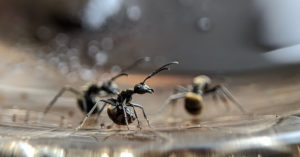 You see a few tiny ants crawling toward a forgotten breakfast crumb on your counter. Without thinking, you squish them with a paper towel, and suddenly there’s an unpleasant smell of rotting coconut. Yuck! You have odorous house ants. [Read more…]
You see a few tiny ants crawling toward a forgotten breakfast crumb on your counter. Without thinking, you squish them with a paper towel, and suddenly there’s an unpleasant smell of rotting coconut. Yuck! You have odorous house ants. [Read more…]
- « Previous Page
- 1
- …
- 7
- 8
- 9
- 10
- 11
- …
- 15
- Next Page »


